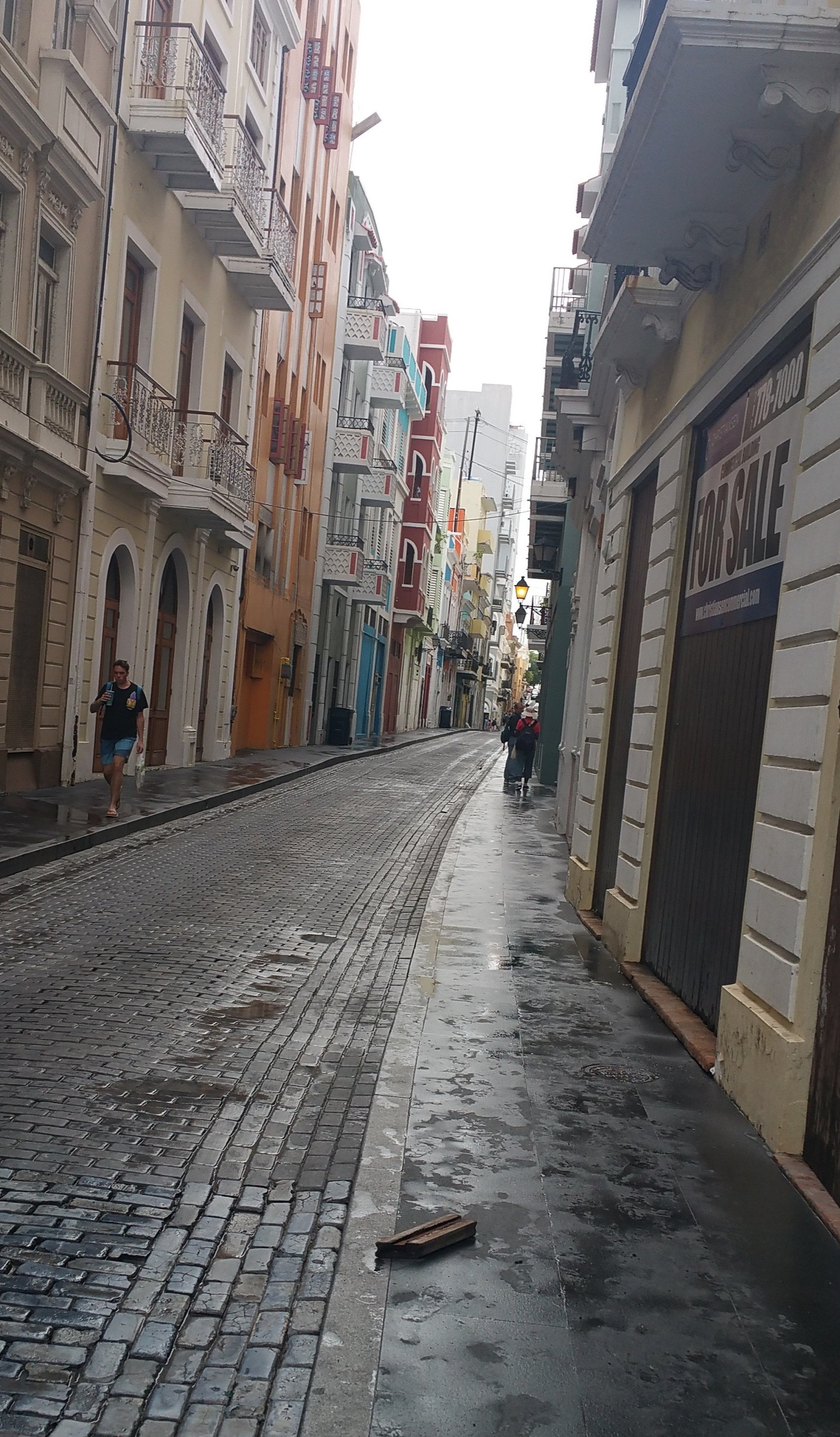Walking through the historic streets of Old San Juan is like stepping back in time to Puerto Rico’s Spanish colonial era. The vibrant colors of the buildings create a warm and inviting atmosphere, yet the imposing forts remind us of the island’s turbulent past and battles fought. Beneath your feet, the blue Cobblestone Streets whisper tales of colonial relationships, connecting Puerto Rico to both Spain and the United States. These aren’t just ordinary stones; they are silent witnesses to history.
Spain’s colonization of Puerto Rico began shortly after Christopher Columbus’s arrival in 1493. San Juan became a vital port for Spanish ships, loaded with gold, sugar, and other riches extracted from the island. Interestingly, the very stones underfoot arrived as unintentional cargo. Spanish ships, crossing the vast Atlantic, used these stones as ballast to stabilize their empty vessels. Upon arrival, these stones were offloaded, making way for the treasures of the New World. Instead of discarding this seemingly useless debris, resourceful road builders repurposed them, paving the streets of San Juan with cobblestones. In essence, these blue stones, which acquire their distinctive hue over time, are remnants of Spanish ships, symbolic of the resources Spain took from Puerto Rico. Embedded in these cobblestone streets is a tangible representation of the Spanish Empire’s exploitation of the island, a history literally underfoot.
 Cobblestone streets of Old San Juan, Puerto Rico, lined with colorful colonial buildings, showcasing the historical architecture and urban landscape
Cobblestone streets of Old San Juan, Puerto Rico, lined with colorful colonial buildings, showcasing the historical architecture and urban landscape
The blue cobblestones also play a significant role in understanding the complex relationship between Puerto Rico and the United States, particularly during the Cold War era. After acquiring Puerto Rico from Spain in 1898 and granting citizenship to Puerto Ricans in 1917, the United States sought to modernize the island as a strategic move against the spread of communism in the Caribbean and Latin America. A key aspect of this modernization was developing Puerto Rico’s tourism industry, with Old San Juan envisioned as a prime attraction. In 1951, plans emerged to transform Old San Juan, then characterized by neglected buildings and slum conditions, into a tourist haven. “Operation Serenity,” a government initiative, commenced construction in 1955, aiming to renovate the area. While property owners in Old San Juan benefited from these renovations, the primary beneficiaries were large corporations like Hilton Hotels & Resorts and Pan American Airways. The burgeoning tourism industry, leveraging eminent domain, effectively colonized the island anew, profiting from its allure, despite the prevailing American narrative of liberating Puerto Rico from Spanish colonialism.
 A detailed street view of blue cobblestones in Old San Juan, Puerto Rico, highlighting the texture and historical paving of the road, with a glimpse of colonial architecture
A detailed street view of blue cobblestones in Old San Juan, Puerto Rico, highlighting the texture and historical paving of the road, with a glimpse of colonial architecture
The construction of hotels boomed, and images of a revitalized Old San Juan became central to promotional campaigns. Cobblestone streets were prominently featured in these advertisements, contributing to the image of Puerto Rico as a captivating tropical paradise imbued with “Old World charm.” The tourism industry strategically aimed to present Old San Juan as an authentically foreign destination, distinct from mainland U.S. territories, enhancing its exotic appeal for tourists.
 A vibrant cobblestone street in Old San Juan, Puerto Rico, with classic cars and colorful buildings, capturing the nostalgic and picturesque atmosphere for tourism promotion
A vibrant cobblestone street in Old San Juan, Puerto Rico, with classic cars and colorful buildings, capturing the nostalgic and picturesque atmosphere for tourism promotion
The renovation of Old San Juan involved laying new cobblestones across the city. These new stones were intended to enhance the European aesthetic of Old San Juan, reinforcing the desired “Old World” image. However, the seemingly aged and worn appearance of these cobblestones is, in a way, an illusion, a carefully constructed element of the U.S.-led transformation. These cobblestones were deliberately made to look old, despite being newly placed, contributing to the curated historical ambiance.
Just as the Caribbean sun orchestrates the interplay of clouds and rain to create rainbows, the blue cobblestone streets of Old San Juan guide visitors through a spectrum of colorful buildings. Yet, this picturesque facade can be deceptive. Stepping off the main streets can quickly reveal the stark realities of less affluent areas, a reminder that Puerto Rico is more than just a postcard. The cracks and imperfections in the blue cobblestones themselves serve as a poignant symbol, a subtle indication that Puerto Rico remains the world’s oldest colony. Beneath the charm and beauty, there is a deeper, more complex story etched in these stones, a story of colonialism, resilience, and the ongoing quest for identity.

